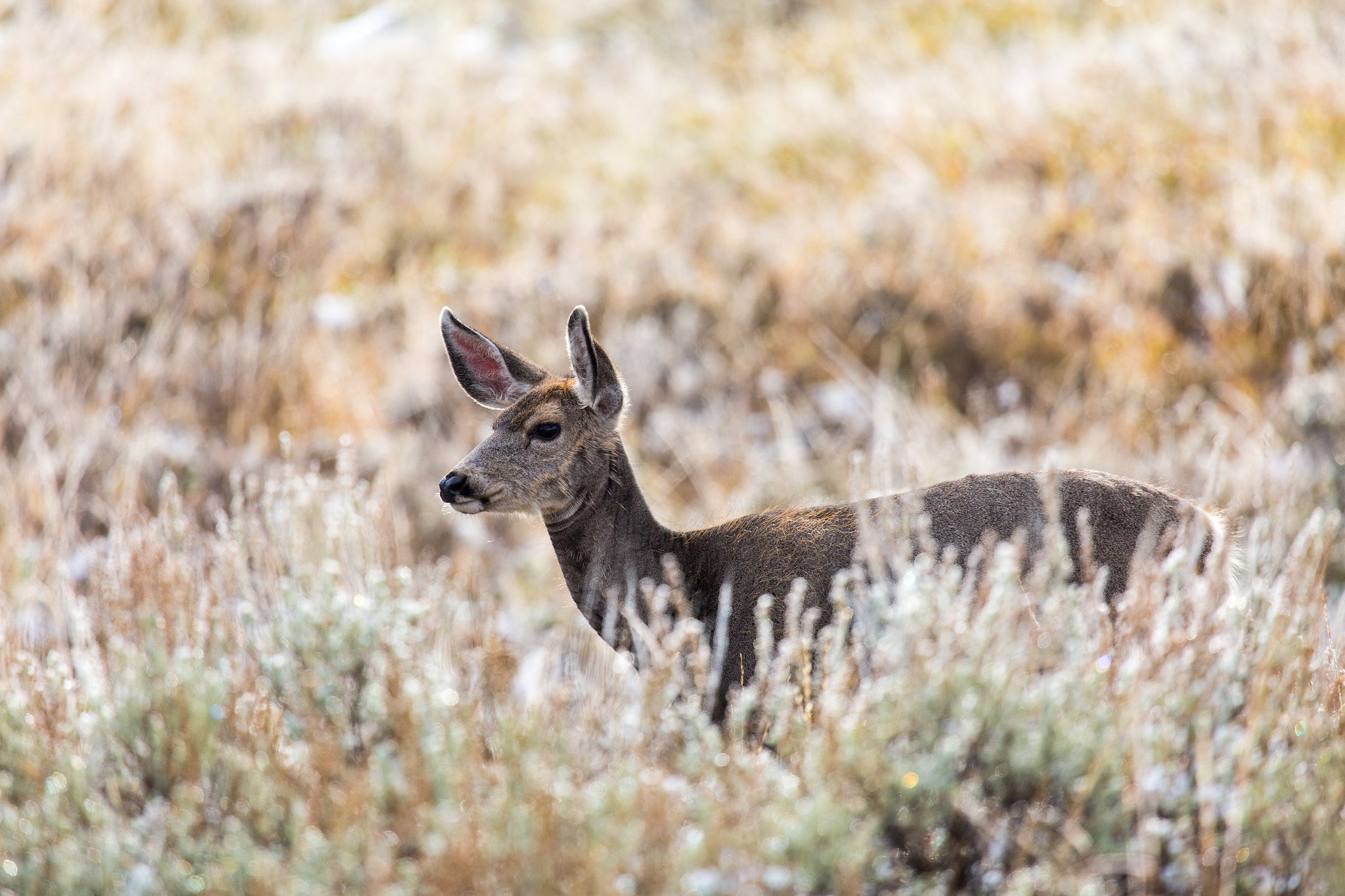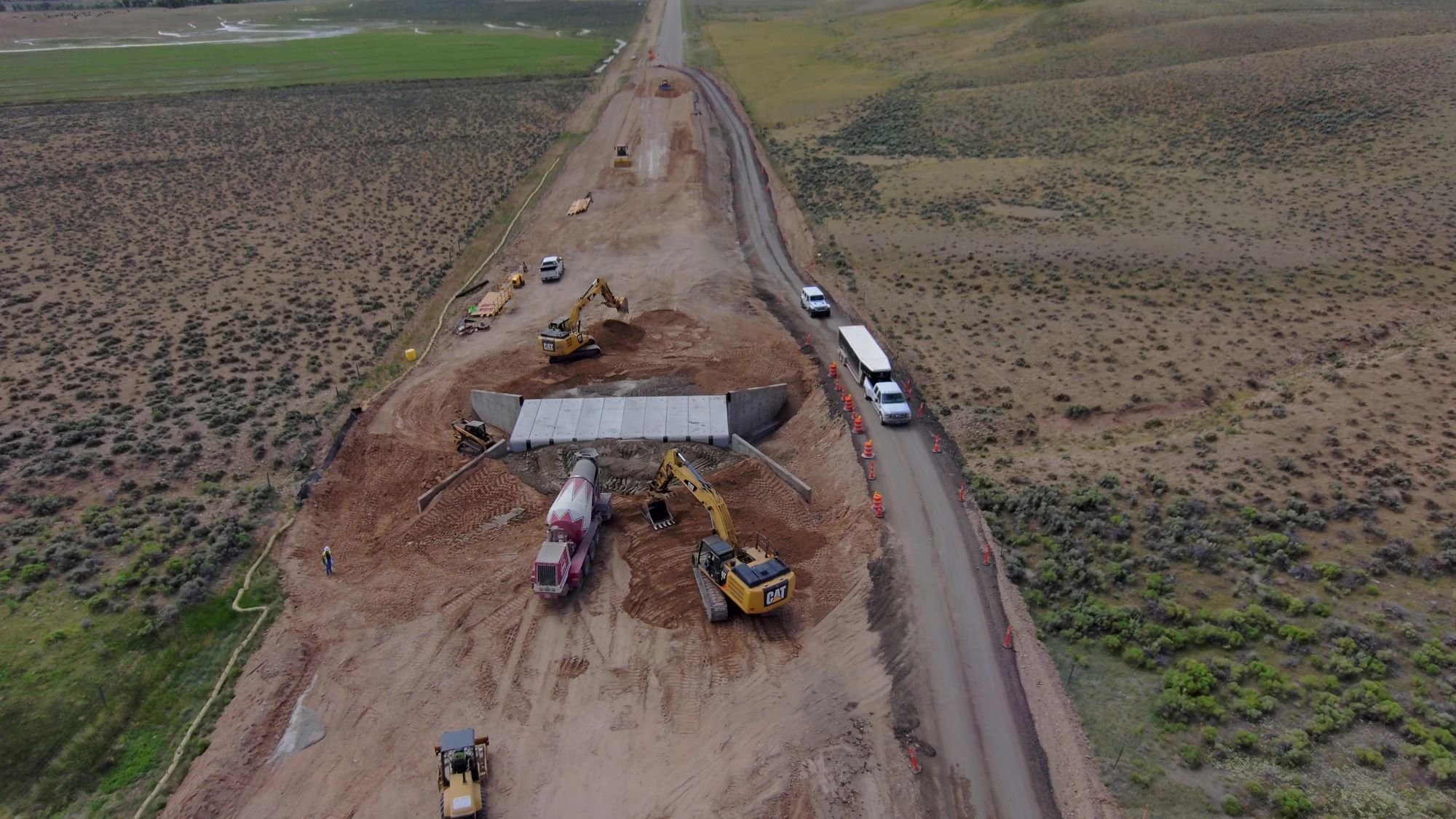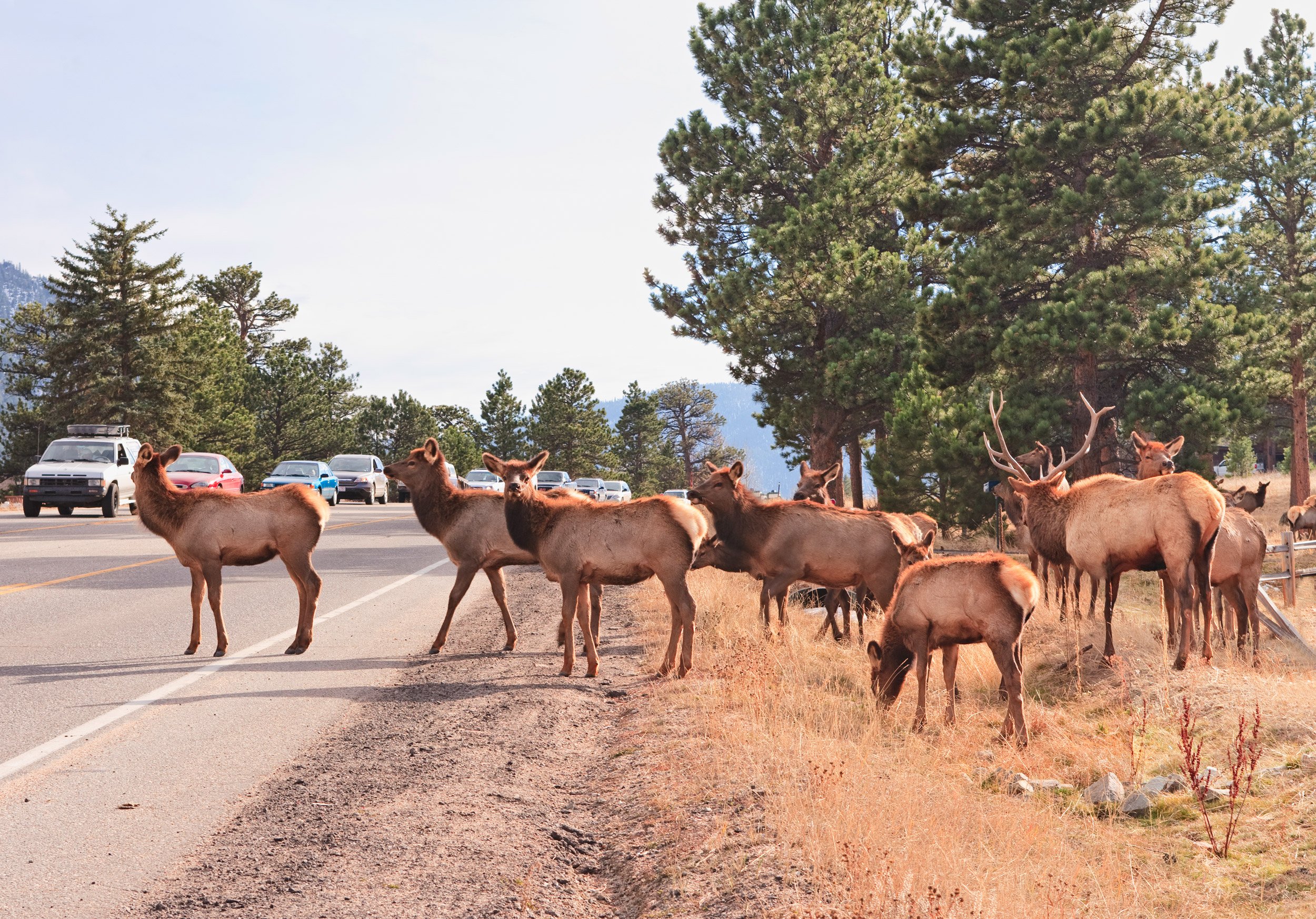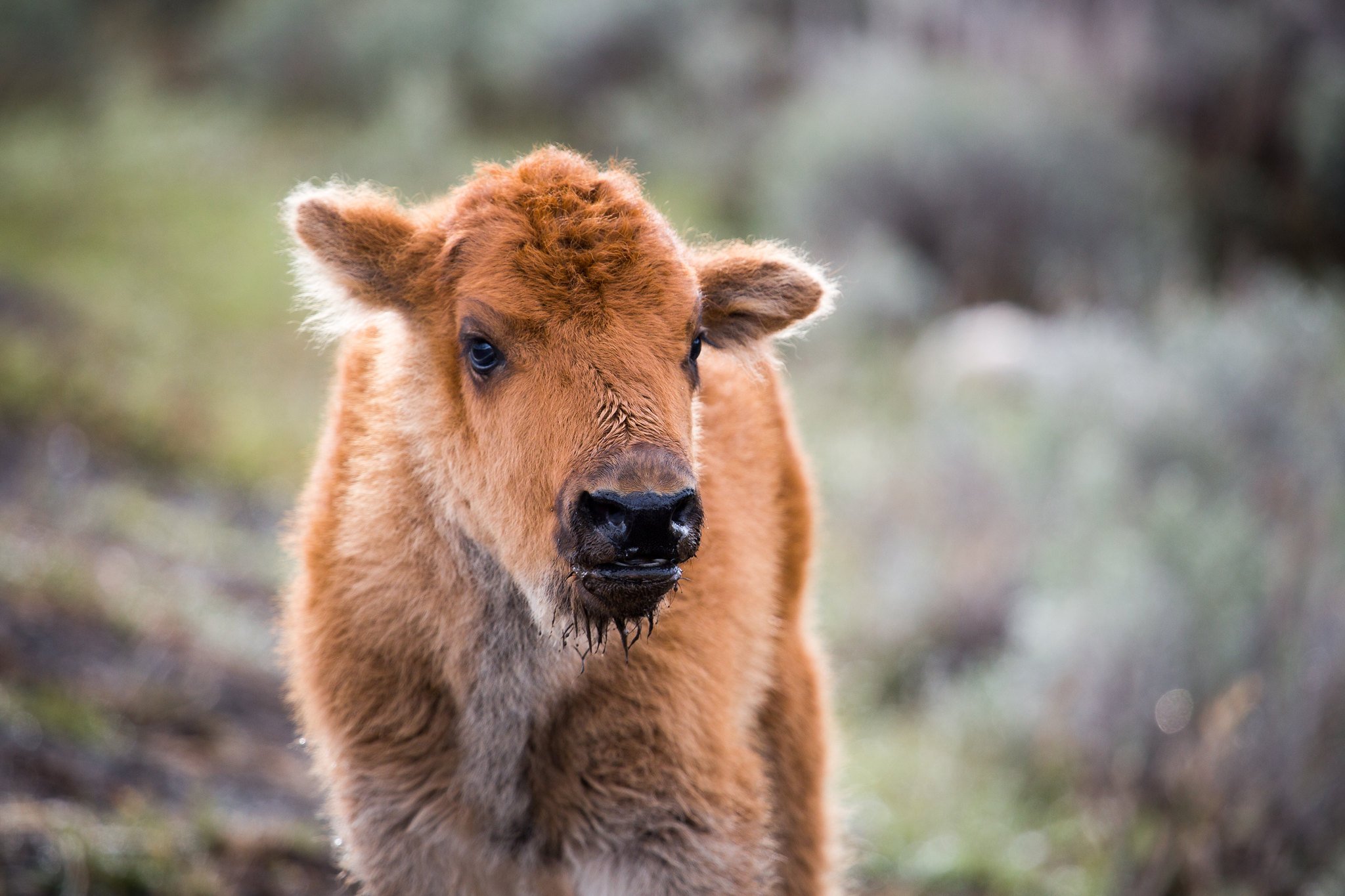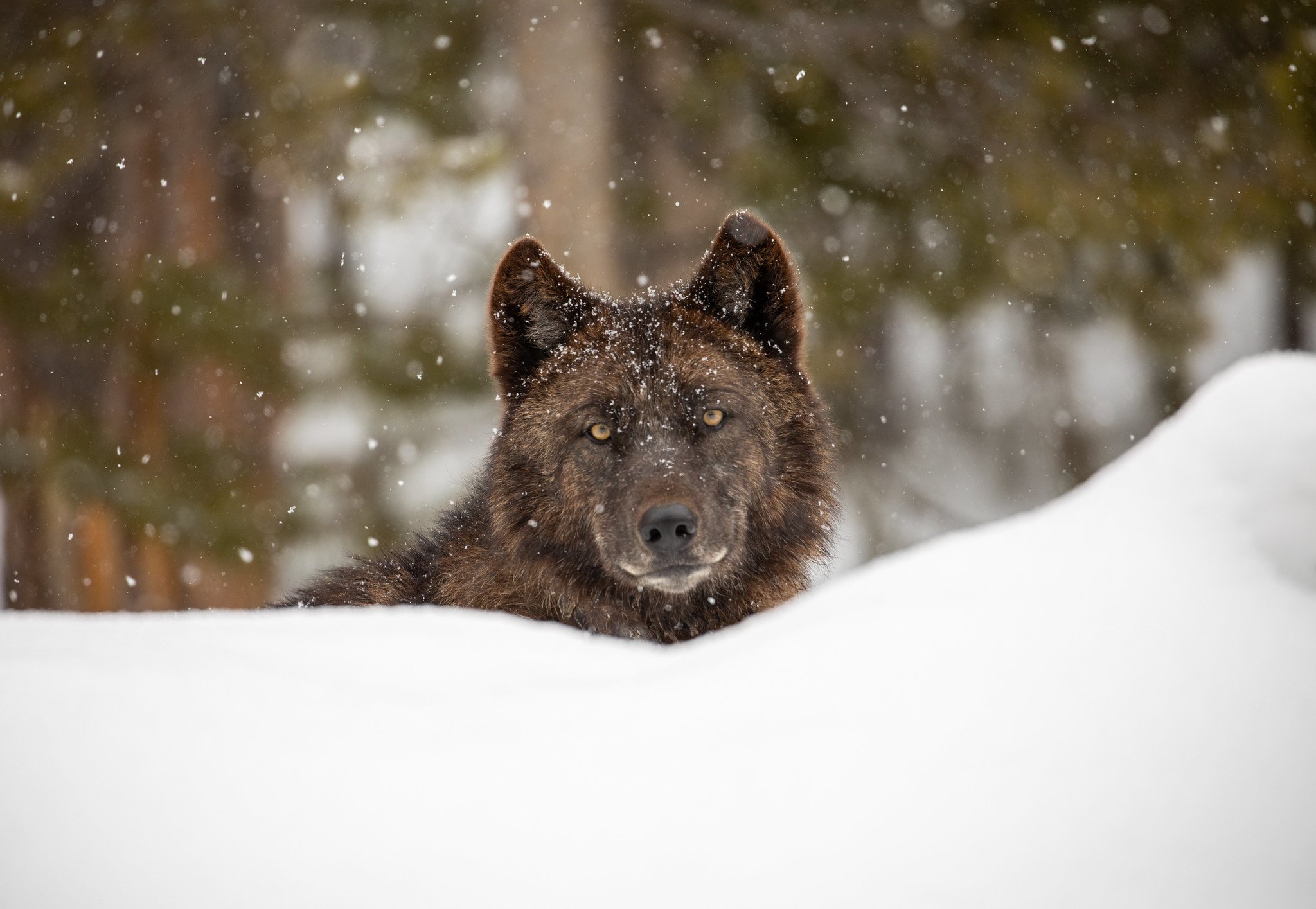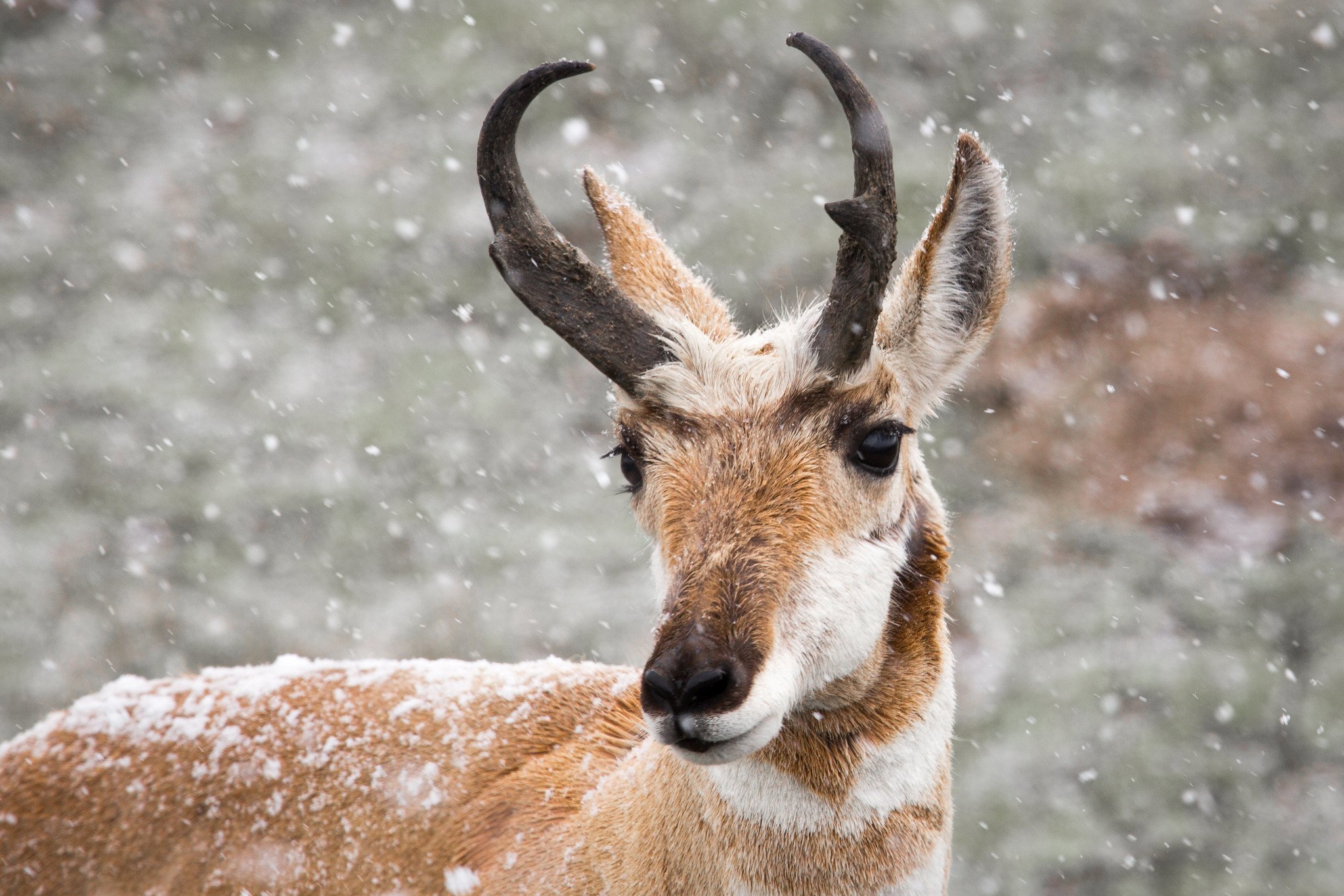
Protecting Ungulates
An American Serengeti
One of the many wonders of traveling through Greater Yellowstone is seeing the immense herds of elk, deer, and pronghorn that dot the landscape. It’s a breathtaking experience. These herds are the heartbeat of the ecosystem, ebbing and flowing through valleys and across elevations with the seasons.
Elk, deer, and pronghorn – which along with other hoofed mammals are collectively known as “ungulates” — are important to the health of the ecosystem. As some of the most abundant Greater Yellowstone animals, ungulates are food for grizzly bears, wolves, and mountain lions as well as many scavengers, like bald and golden eagles. They are also often migratory, and spread nutrients across the landscape as they move with the seasons. These movements of large ungulate herds are the heart of Greater Yellowstone and shape the dynamics of the region in myriad ways.
A Divided Landscape
Greater Yellowstone is home to some of the last remaining long-distance wildlife migrations in North America. The migration routes of these ungulates are varied and wide ranging, with some individual animals traversing thousands of miles in their lifetime.
Elk, deer, and pronghorn move with the seasons, seeking refuge in the brutal winter months and greener pastures and birthing grounds come spring and summer.
In many cases, these are paths they have taken for thousands of years.
Roads bisect the vast landscape from southwest Montana to northwest Wyoming and everywhere in between. A network of highways poses significant challenges for the thousands of ungulates moving to meet their basic needs. Wildlife-vehicle collisions are far too common in the Greater Yellowstone states of Montana, Wyoming, and Idaho.
These collisions are a human safety concern, negatively impact wildlife, and accrue millions of dollars in economic impact each year.
If You Build It, They Will Come
The Greater Yellowstone Coalition works with a wide range of people and partners to highlight the importance of sustaining ungulate migrations, reducing wildlife-vehicle collisions, and improving safe wildlife passage across roads. We work on a variety of projects to remove barriers to wildlife migration and movement and secure funding for wildlife crossings like overpasses and underpasses on highways with high wildlife-vehicle collision rates.
Our goal is to enhance and restore wildlife movement and connect landscapes across Greater Yellowstone.
Our ungulate work includes:
Securing funding and support for wildlife crossings
Wildlife crossings, whether overpasses or underpasses, are effective solutions for reducing wildlife-vehicle collisions and reconnecting habitats. GYC has helped acquire millions of dollars in funding for wildlife crossings, many of which are in the process of design and construction in Wyoming.
Removing and modifying barriers to wildlife migration and movement
There are countless miles of fencing within Greater Yellowstone, much of which hinders freedom of movement for ungulates and other wildlife. Luckily, it is a simple process to retrofit fencing to allow better movement for the species that frequent the area. We work with collaboratives and host volunteer days across the ecosystem to make fencing more wildlife-friendly and permeable.
Leading coalitions that focus on advocating for policies and educating the public
By working with partner nonprofits and Greater Yellowstone community members, we are presenting a unified front when it comes to preserving migration and movement paths. We work with decision-makers to advance policies that consider wildlife migration and movement from the beginning in highway planning, and we raise public awareness to grow support for making roads safer for people and wildlife.
Securing habitat with elk occupancy agreements
Elk occupancy agreements incentivize ranchers to provide crucial, unobstructed habitat for elk and other wildlife on private land while reducing competition between elk and cattle, a win-win for wildlife and landowners. GYC and partners facilitate these agreements and promote coexistence across this increasingly crowded and complex ecosystem.
We’re dedicated to protecting the wildlife of Greater Yellowstone.
Protecting Bison
Protecting Grizzlies
Protecting Wolves
